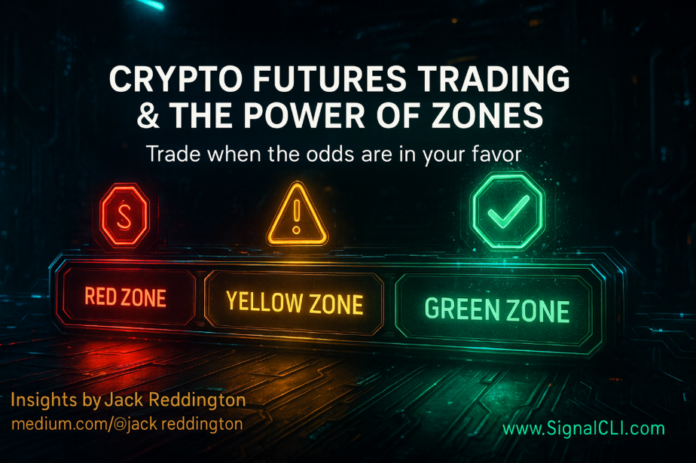Crypto futures trading has evolved from a niche strategy for early adopters into a mainstream tool used by retail traders, institutions, and even some businesses. With 24/7 markets, high liquidity, and the ability to trade with leverage, futures can be a powerful way to capitalize on market opportunities — but they can also be unforgiving for those without a disciplined approach.
One of the key developments helping traders navigate this landscape is the rise of signals providers — platforms or services that deliver real-time trade ideas based on technical, fundamental, and algorithmic analysis. And among the more advanced methods emerging in this space is the concept of trading zones, a timing model designed to help traders act when market conditions are most favorable.
A Quick Refresher: What Are Crypto Futures?
Crypto futures are derivative contracts that allow traders to speculate on the future price of a cryptocurrency without owning the underlying asset. Futures can be used to:
- Profit from both rising and falling markets (long or short positions).
- Hedge existing positions against adverse price moves.
- Use leverage to control larger positions with smaller capital outlay.
Leverage can amplify gains, but it can also magnify losses — which is why proper risk management is essential.
Why Traders Turn to Signals Providers
Signals providers act as force multipliers for traders. Instead of scanning the market for hours, a trader can receive pre-analyzed opportunities directly to their device. The benefits can include:
- Time savings – filtering thousands of potential setups down to a handful of quality opportunities.
- Consistency – applying the same criteria day after day without emotional interference.
- Access to advanced analysis – leveraging professional tools, AI, and large-scale data analysis that might be too expensive or time-consuming to run individually.
But the quality of providers varies widely — and the difference between a generic alert and a well-structured, data-driven signal can be night and day.
The Zones Concept: Timing as a Competitive Edge
One of the most powerful — yet rarely discussed — methods for improving signal performance is structured market timing through zones.
In this model, market hours are divided into three categories:
- Green Zones – High-probability trading windows where liquidity, volatility, and directional bias align. Trades taken in these periods statistically perform better.
- Yellow Zones – Moderate-probability windows that require more caution and stricter filtering of setups.
- Red Zones – Low-probability windows when market conditions are poor, liquidity is thin, or volatility is erratic. These are periods to avoid entirely.
By classifying time this way, a trader isn’t just relying on what to trade — they also know when to trade it.
Why Most Providers Don’t Offer Zones
The zones model requires an enormous amount of trade data to identify patterns and validate results. It’s not enough to look at a week’s worth of charts — you need hundreds or even thousands of trades across varying conditions to determine which hours consistently deliver better results.
Most providers focus on raw signals without timing context because compiling and updating a zone-based schedule demands large-scale data processing and continuous analysis.
The Practical Benefits of Trading in Zones
For traders, integrating zones into their decision-making can lead to:
- Better win rates – focusing only on times when the market tends to cooperate.
- Reduced overtrading – removing the temptation to chase setups during low-quality periods.
- Improved risk management – limiting exposure to conditions with historically poor performance.
Even short-term traders can benefit. For example, a Green Zone session might produce 10–15, or even 25+ high-probability trades in a day, giving plenty of opportunity without straying into riskier hours.
How to Use This in Your Own Trading
You don’t need to overhaul your entire strategy to benefit from zones. A simple way to start is to:
- Track the time of day for each of your trades.
- Review performance over several weeks to see if certain periods outperform.
- Create your own version of Green, Yellow, and Red Zones based on your data.
- Focus your efforts in the periods where you consistently see better results.
If you work with a signals provider that includes zone-based scheduling, you can shortcut this process and benefit from a much larger data set than you could generate alone.
The Future of Signal-Based Trading
As the market matures, the role of signals providers will likely expand beyond simply delivering entries and exits. The integration of timing intelligence, like trading zones, could become a standard feature — helping traders combine high-quality setups with optimal market conditions.
Until then, those who adopt a zone-based approach early will have a competitive edge, filtering out market noise and aligning their trades with the most profitable windows the market has to offer.
About SignalCLI
